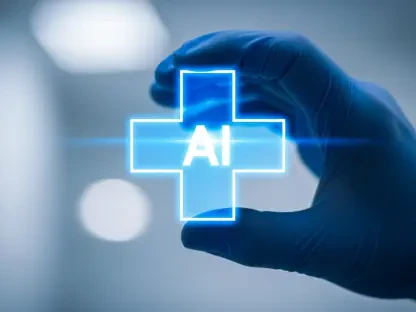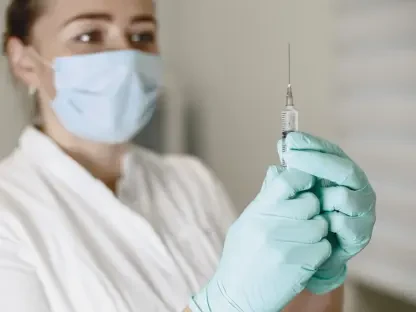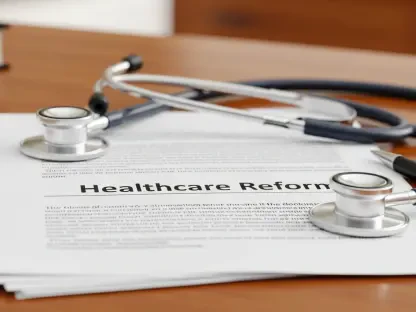I’m thrilled to sit down with Faisal Zain, a renowned expert in healthcare technology with a deep background in medical device manufacturing for diagnostics and treatment. With years of experience driving innovation, Faisal has a unique perspective on how technology can transform patient care. In this conversation, we dive into the limitations of current systems like electronic health records, the power of integrating diverse data sources, the shift toward proactive medicine, and the challenges and promises of technology in healthcare. Join us as we explore how clinicians can leverage data to deliver more personalized and effective care.
Can you walk us through why electronic health records alone often fall short in giving doctors a complete view of a patient’s health?
Absolutely. Electronic health records, or EHRs, are a critical tool, but they’re inherently limited because they mostly capture what happens during clinical visits. They often miss the bigger picture of a patient’s life outside the exam room—like whether they’re taking their meds, staying active, or dealing with other issues. This narrow focus means doctors don’t always know if their advice is being followed or if new problems are brewing between appointments. It’s like trying to understand a story by only reading a few chapters.
What specific kinds of information do EHRs typically miss that could be crucial for tracking a patient’s progress?
EHRs often lack data on daily behaviors and real-time health metrics. For instance, they don’t capture things like a patient’s activity levels, sleep patterns, or heart rate trends over time. They also miss out on external care events, like treatments or tests done at other facilities, and personal barriers, such as financial struggles or medication side effects, that patients might not mention during a quick visit. These gaps can make it hard to gauge how a patient is really doing.
How can wearable devices, like smartwatches, enhance a doctor’s understanding of a patient’s day-to-day health?
Wearables are game-changers because they provide continuous data streams about a patient’s life outside the clinic. They track things like steps, heart rate, and sleep quality, giving doctors insights into patterns that might indicate early issues—like declining activity hinting at depression or irregular heart rates suggesting a problem. This allows clinicians to intervene sooner rather than waiting for the next appointment to notice something’s off.
Why is claims data so valuable, especially when patients receive care from multiple providers or locations?
Claims data acts like a roadmap of a patient’s healthcare journey across different settings. It shows where they’ve been treated, what medications they’ve filled, and what procedures they’ve had, even if it’s outside their primary doctor’s network. This helps fill in the blanks that EHRs miss, ensuring doctors aren’t working with incomplete information. It’s particularly useful for coordinating care and avoiding redundant or conflicting treatments.
Can you share an example of how claims data might help avoid unnecessary costs or medical risks?
Sure. Let’s say a patient had a CT scan done in another state a month ago. Without claims data, their current doctor might not know this and order another scan, exposing the patient to extra radiation and driving up costs. Claims data can reveal that recent history, allowing the doctor to skip the duplicate test, save money, and reduce risk. It’s a practical way to make care more efficient and safer.
How does communication data, such as patient messages or call notes, add depth to a doctor’s perspective on a patient’s situation?
Communication data captures the human side of healthcare that often gets lost in clinical notes. Through calls or messages, patients might reveal they can’t afford their medication, are struggling with side effects, or face other barriers like transportation issues. This context helps doctors understand the ‘why’ behind a patient’s health challenges and tailor their approach to address those real-world obstacles.
How do additional data sources help shift doctors from reacting to health problems to preventing them?
These data sources—wearables, claims, communication logs, and more—give doctors a fuller, real-time view of a patient’s health, not just a snapshot from a visit. With this broader perspective, they can spot trends or red flags early, like declining activity or missed prescriptions, and step in before a minor issue becomes a crisis. It’s about staying ahead of problems rather than just cleaning up the aftermath.
What does proactive care look like in action when doctors have access to this wider range of data?
Proactive care means using data to anticipate needs. For example, if wearable data shows a patient’s heart rate spiking at night, a doctor might reach out to check for signs of a condition like sleep apnea before it worsens. Or, if claims data flags an unfilled prescription, they can follow up to ensure the patient has what they need. It’s about personalizing interventions based on ongoing insights, not waiting for the patient to come in with a complaint.
Why has technology, which was meant to streamline healthcare, sometimes made things harder for physicians?
Technology promised efficiency, but it’s often added burden instead. Doctors are bogged down by excessive documentation, managing overflowing inboxes, and navigating clunky, disjointed systems. Studies show they spend more time clicking through EHRs than talking to patients. This overload distracts from what matters most—patient care—and leaves clinicians frustrated and stretched thin.
How can emerging tools like artificial intelligence help address these technology challenges in healthcare?
AI and similar tools can be a lifeline by doing the heavy lifting of data processing. They can sift through massive amounts of information from EHRs, wearables, and claims, then distill it into clear, prioritized insights—like flagging a patient who missed a refill and had a recent ER visit. This lets doctors focus on decision-making and patient interaction rather than drowning in data. It’s about making tech work for physicians, not against them.
What is your forecast for the future of data integration in healthcare?
I’m optimistic that we’re heading toward a more connected, patient-centered system. As data integration improves, I see clinicians gaining seamless access to diverse sources in real time, supported by AI that makes sense of it all without adding complexity. The focus will shift even more to prevention and personalization, with technology empowering doctors to deliver care that’s truly tailored. The challenge will be ensuring equity and privacy, but if we get that right, the impact on patient outcomes could be transformative.









